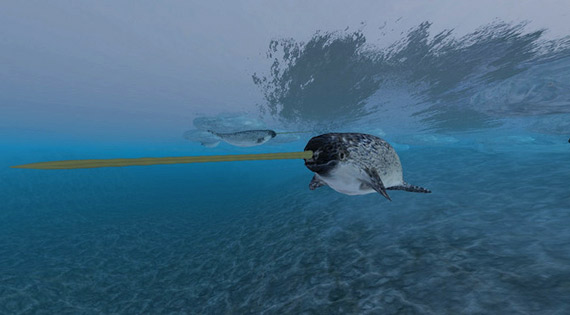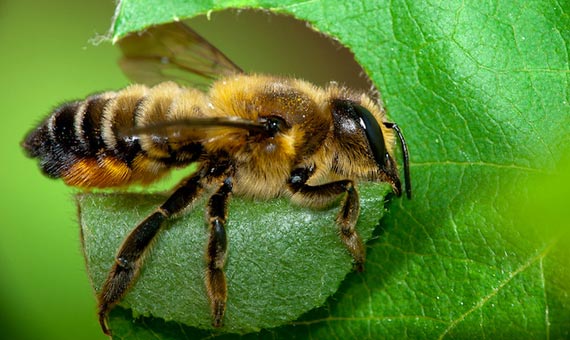What Are Senses Other Animals Have That Humans Don't
Most humans do non oft wonder if reality is truly every bit we perceive information technology, but this question has fascinated philosophers since artifact. If Plato or Kant were alive today, they would probably be astonished at all that science has revealed about the reality around us that nosotros practice not perceive, merely that many other species do. This is a review of some of the creature senses that are the closest thing to real superpowers, and that provide their holders with a version of the globe very different from ours.
A map of sound
The power of bats to map their surroundings through sound is one of the most studied animal senses. Opposite to pop conventionalities, these flight mammals are not bullheaded, but their optics are of picayune use to them when they take hold of insects in flight at night. The shrieks of bats, inaudible to the homo ear, bounce off their environs and their moving prey. The timing of the return signal, its direction and alter of frequency—due to the Doppler upshot, like when an ambulance with a wailing siren passes past—allow them to hunt with incredible accuracy.
Ten-ray vision
The sonar arrangement of dolphins and toothed whales is actually the same echolocation system used by bats, merely underwater. The sounds produced by these marine mammals allow them to grade a mental map of their surround in three dimensions. But this ability is even more than incredible—the sound waves emitted by dolphins can penetrate through certain objects and soft tissues, providing the animal with a kind of Ten-ray vision of their possible prey or threats. Present, engineers are trying to re-create this ability to improve sonar detectors.

One peculiar example is that of the narwhal. This marine unicorn, whose forepart appendix is really a very specialized left canine tooth, lives and hunts under the huge ice sheets of the Chill, ever finding some modest gap to have a breath. How does information technology do this? A recent report has institute that narwhal sonar is the most directional of all known, giving it extraordinary precision.
According to what Kristin Laidre of the University of Washington, USA, the co-writer of the study, explained to OpenMind, the narwhale sonar is a "highly evolved" mechanism that allows these animals to obtain detailed information, enabling them to routinely submerge upwards to ane,500 meters. "Their utilise of audio is critical for finding nutrient, navigating the dense body of water ice and communicating," says Laidre.
Receptors for finding blood
If we bring our manus close to a ceramic hob, we can experience the estrus without touching it, thanks to the sensory neurons in our skin. But we tin but perceive temperatures higher up 43°C. For other species, the perception of heat or thermoregulation is an essential sense that helps them to recognize their surroundings. Vampire bats employ their olfactory organ and upper lip, which come equipped with heat receptors, that allow them to notice temperatures of thirty°C at a altitude of upward to twenty centimetres. This facilitates the localization of their casualty and even the areas of skin that line the blood vessels, letting them know the all-time place to puncture in their search for blood.

Some vipers and boas discover the heat of their casualty thank you to specialized facial pit organs. The direction of the source is given by the part of the pit that perceives the rut and the presence of pits on both sides of the head allows them to measure the altitude.
Electric traffic
Electricity is invisible to us, simply for some species information technology is similar a traffic signal that guides them toward their objective. Sharks and other fish can detect information technology thanks to a set of channels filled with a gelled cloth, which are open up to the exterior through pores in the peel. These organs, which sharks have on the caput, are called Lorenzini blisters. A like system is present in the curious beak of the platypus, with which they tin can locate their prey in deep and turbid waters. Information technology is the but case known to date of a mammal capable of sensing electricity.

A curious case is that of bumblebees. In 2016, a study found that these insects accumulate a positive charge during flight, and that the attraction to the negative accuse of the flowers moves the hairs of their legs, which helps the bumblebee to locate its target. The pollinated flowers then change their electric accuse, thereby averting other insects from visiting the same bloom.
Navigating with light
The eyes of some insects, and also those of other animals such as octopus, take a virtue that ours lack: they are able to distinguish polarized lite, meaning low-cal that has a specific vector orientation in space. Being able to take reward of these different orientations of light in the heaven would exist useful for navigation, and that is exactly what is accomplished by those ants or bees capable of traveling great distances to return to their anthills or hives. They manage the feat cheers to the dorsal border of their eyes beingness able to perceive polarized lite. The discovery of this mechanism of the insects today serves equally an inspiration for engineers in search of new navigation systems that do non depend on the capture of satellite signals.
Ultraviolet flowers
Perhaps it may seem to united states that flowers are at that place to decorate nature, merely the truth is that they compete with each other in attracting the attention of insects, their pollinators. The colours that we can encounter in them are irrelevant; what really matters is to catch the interest of insects, and they do not run across the same matter as us. Many flowers that for humans have a smooth colouring hide a striking pattern visible only in the ultraviolet range of the spectrum, something that bees can see.
Natural Compasses
The first observations that sure animals tend to align their bodies with the due north-s axis of the Earth'southward magnetic field date back decades, but for years scientists found no explanation for this ability that, co-ordinate to what has been confirmed, is present in creatures ranging from bacteria to vertebrates.

Dissimilar species are now thought to use different systems. For instance, in that location is a type of pigment called cryptochrome that is nowadays in the eye of some species and is activated with blue lite by a quantum mechanism sensitive to magnetism. Information technology is thought that this would let these animals to come across the terrestrial magnetic field in the form of a blueish trail. Yet, magnetic particles have also been found in the beaks of some birds. In improver, bees have a ring of magnetite granules in their abdomen that acts equally a natural compass and allows them to orient themselves during their flights away from the hive.
Past Javier Yanes for Ventana al Conocimiento
@yanes68
Source: https://www.bbvaopenmind.com/en/science/bioscience/things-that-animals-perceive-about-the-world-that-we-humans-dont/
Posted by: hollandwoorkepark.blogspot.com

0 Response to "What Are Senses Other Animals Have That Humans Don't"
Post a Comment